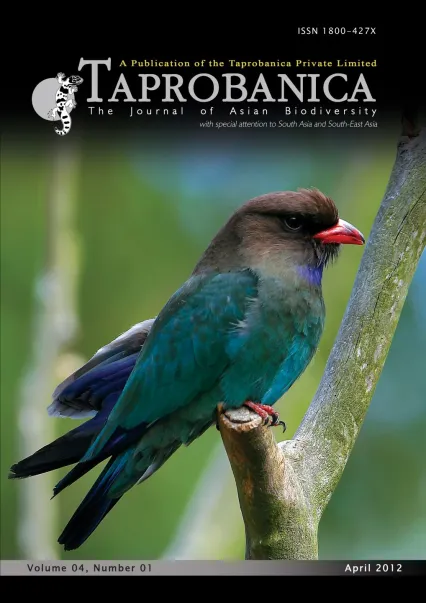

v4i1.67
Volume 4 | Number 1 | May 2012
Short Note
ISSN: 1800-427X (print)
eISSN: 1800-427X (online)
DOI:10.47605/tapro.v4i1.67
Submitted date: 16 December 2011
Accepted date: 30 April 2012
Published date: 28 May 2012
Pp. 54–56.
Three tick species parasitizing a rock python in Sri Lanka
T.S.P. Fernando* & H.K.A.V.A. Kulasena Fernando
*E-mail: saminda@ou.ac.lk
Parasitism is a relationship where one of the parties (the parasite) either harms its host or lives at the expense of it. Host parasite interactions are important driving forces in population dynamics and even extinction. These interactions are also indicators of ecosystem health and they are important in stabilizing food webs. A parasite may cause mechanical injury, stimulate a damaging inflammatory or immune response, or simply rob the host of nutrition. However in the wild most parasites must live in harmony with their hosts. If the parasites kill the host, they themselves would ultimately die without shelter and nutrition. Reptiles become hosts to a number of parasitic organisms ranging from protozoans to arthropods. Among these, ticks (hard and soft) are the most common arthropod group that parasitizes reptiles.
Section Editor: Colin A. Chapman
eISSN: 1800-427X (online)
DOI:10.47605/tapro.v4i1.67
Submitted date: 16 December 2011
Accepted date: 30 April 2012
Published date: 28 May 2012
Pp. 54–56.
Three tick species parasitizing a rock python in Sri Lanka
T.S.P. Fernando* & H.K.A.V.A. Kulasena Fernando
*E-mail: saminda@ou.ac.lk
Parasitism is a relationship where one of the parties (the parasite) either harms its host or lives at the expense of it. Host parasite interactions are important driving forces in population dynamics and even extinction. These interactions are also indicators of ecosystem health and they are important in stabilizing food webs. A parasite may cause mechanical injury, stimulate a damaging inflammatory or immune response, or simply rob the host of nutrition. However in the wild most parasites must live in harmony with their hosts. If the parasites kill the host, they themselves would ultimately die without shelter and nutrition. Reptiles become hosts to a number of parasitic organisms ranging from protozoans to arthropods. Among these, ticks (hard and soft) are the most common arthropod group that parasitizes reptiles.
Section Editor: Colin A. Chapman
- List of Articles & Contents





